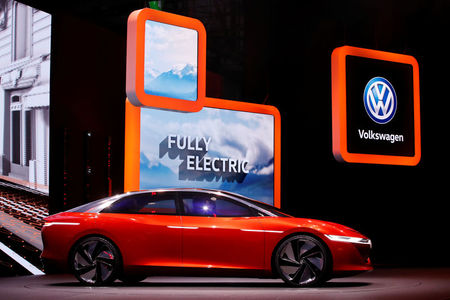Why is Volkswagen closing plants?
2024.09.07 05:00

Investing.com — Volkswagen (ETR:), one of the world’s largest automakers, has announced plans to close certain plants, particularly in Europe.
The decision stems from several factors tied to market dynamics, regulatory changes, and internal financial strategies, as per analysts at Citi Research.
One of the primary reasons behind Volkswagen’s plant closures is the contraction in the European car market.
“This was mostly related to the “Japanification” of the European car market,” the analysts said, which has not rebounded to its pre-pandemic volume of 14.5 million units, remaining around 13.0 million.
With Volkswagen maintaining a stable 26% market share, this volume loss directly translates into a significant reduction in sales.
Volkswagen, as a market leader, has suffered from this decline, losing about 500,000 vehicle sales annually.
This decline alone accounts for the majority of the losses, forcing the company to reconsider its production capacity.
The mismatch between current demand and production capabilities has made it increasingly unsustainable for Volkswagen to operate its existing network of plants without incurring excessive costs.
In addition to the broader market contraction, European consumers have begun shifting toward cheaper alternatives and are delaying purchases of internal combustion engine vehicles.
This change is partly driven by impending regulations around battery electric vehicles and the rapid advancements in automotive technology.
Consequently, Volkswagen faces both lower sales volumes and intense price competition as consumers delay or reduce their spending.
Volkswagen has launched a €10 billion restructuring plan to reduce costs, focusing on its core VW brand.
However, this plan now seems to be falling short. Citi analysts estimate that the shortfall could be as high as €2-3 billion due to the continued low demand and market contraction.
The lower-than-expected recovery in vehicle volumes has exacerbated Volkswagen’s financial challenges, making cost reductions even more urgent.
With escalating labor costs, driven in part by union demands for a 7% pay increase globally, the automaker is under immense pressure to streamline operations.
Without major cost reductions, the company’s core business could face potential losses.
Volkswagen’s options for mitigating these challenges are also restricted by strict European Union BEV regulations. If not for these regulations, Volkswagen might have considered releasing cheaper ICE models to spur demand and utilize existing plant capacity.
“However, BEV regulations reduce the annuity value of such investments as new ICEs need to be phased out by 2030 or 2035 at the latest,” the analysts said.
Similarly, introducing more BEV models is not a straightforward solution either, as these vehicles remain relatively expensive, and consumer demand for them remains muted.
Volkswagen is also facing increased competition in key export markets, particularly from Chinese automakers.
The rising dominance of Chinese companies in the global automotive industry has complicated Volkswagen’s strategy, especially in China, where local manufacturers are rapidly gaining market share.
This heightened competition in export markets has diminished Volkswagen’s ability to offset its European losses through international sales, making plant closures in Europe even more necessary.
Volkswagen operates around 120 production facilities globally, of which 34 are in Europe. The company’s complex production system, shared across multiple brands and platforms, adds another layer of operational cost.
With declining volumes and increasing pressure on profitability, maintaining such a large production network has become unsustainable.
“Including Brussels, further European (German) restructuring seems inevitable given the new volume reality,” the analysts said.








